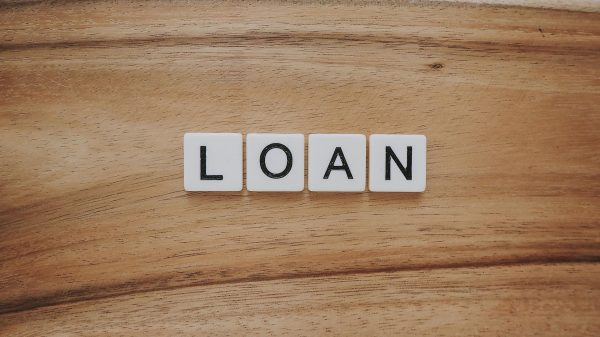Are you in a situation where you say – My debt-to-income ratio is high? Did the bank tell you that as well? Then it is a signal that you should start looking for information about the ways how you could lower your debt-to-income ratio. Before understanding the ways how you could lower your debt-to-income ratio, make sure that you have enough information to define the debt-to-income ratio. In addition, you should also be familiar with the basic idea and functioning of the ratio itself, as well as some of the basic steps that will help you to decrease your debt-to-income ratio. Before continuing to the different ways and techniques for lowering your debt-to-income ratio, keep in mind that it is recommended that the debt-to-income ratio should be below 43%, whereas a DTI under 36% is considered to be highly acceptable. So, what are the ways or techniques to lower your debt-to-income ratio? The three basic areas which will help you to decrease your DTI are existing debts, monthly income, and monthly expenses.
But first, if you are faced with a high debt-to-income ratio, you should not get disappointed. Instead, you should try to find ways how to lower the debt-to-income ratio. There are numerous ways to get to the point of having an adequate debt-to-income ratio. You should simply collect the information about the different ways and decide on the best way in accordance with your financial situation. Meaning that you should choose the best way suitable for your preferences and needs. Moreover, keep in mind that you should have patience when it comes to lowering your debt-to-income ratio. Take your time, don’t rush into things if you do not have adequate information or knowledge.
How to lower your debt-to-income ratio?
Read the following 8 ways to lower your debt to income-ratio:
- Reducing your existing debt (if possible) – since the DTI ratio is calculated on the basis of your monthly debt obligations and your monthly gross income, you can decrease DTI by decreasing the level of debt obligations. Meaning that you could start by paying off your car loan, credit card, consumer loans, etc. Thus, you will lower your monthly debt obligations and consequently lower your debt-to-income ratio. Your DTI is lowered because you are decreasing your monthly recurring debt. If you plan to use these techniques to decrease your debt-to-income ratio, then you should fat familiar with the different strategies to pay off loans faster.
- Renegotiate the terms of the existing debt(s) – another way to lower your DTI is to renegotiate the terms of current debt(s) with your lenders. You should check to see if you could increase the repayment period on some (or all) of your existing loans. Keep in mind that a four-year car loan makes your DTI higher compared to a seven-year car loan. Moreover, you could also renegotiate the interest rate on your loan.
- Make a higher down payment – increase the down payment, and you are decreasing the overall loan amount. Thus, the monthly payment is decreased as well. This trick to lower your debt-to-income ratio can be used if you can afford to save more money for your down payment. This is, in a sense, that you have a portion of your income that could go toward the down payment without hurting your living standard. In addition, you could find ways to gather as much money as you can for your down payment. For instance, you could have a yard sale, and the money collected will go into the down payment fund.
- Unnecessary expenses – this technique is in a way interrelated with the loan repayment and the increase of a down payment technique. Meaning that cutting down all unnecessary expenses will enable you to save a certain amount of money. This money could then go toward the downpayment funds, repayment of a credit card bill, car loan, or some other debt you might have. Thus, as it was mentioned earlier, by lowering the debt obligation, you are lowering your debt to income ratio.
- Government help – in order to support the idea for new renters to become home buyers, a couple of government programs have been established. One such program is the Federal Housing Administration (FHA) loans. The FHA loans give the opportunity to borrowers with a high debt-to-income ratio to buy a home. This loan allows the buyer to have a higher mortgage payment, otherwise, the borrower could not qualify. The Veteran Administration (VA) loan is aimed at supporting veterans in their home-buying process. The VA loan allows veterans to have a debt-to-income ratio as high as 41%. If you are a homeowner and you are interested in refinancing, then you could gather information about the Home Affordable Refinance Program (HARP). In order to qualify for this program, you should prove that you are barely paying all of your debt obligations. In addition, you must have a clear record of on-time payment of your obligations during the last year, as well as a good credit score. The HARP program can be beneficial if you owe more than the value of your home.
- Increase your income – is one of the easiest ways to lower your debt-to-income ratio and, at the same time, one of the hardest ways. The repayment of existing debts is one side of the equation, the other side is the gross monthly income. So the higher the gross monthly income (if the debt level is at the same level), the lower the debt-to-income ratio. Thus, you could try to increase your monthly income. But this is easier said than done because you might have difficulties in increasing the gross income. Anyway, you could try to increase your gross income by taking out a second job. Keep in mind that you should base your estimation on the income reported for tax purposes. If you have income that is not reported, then you can not use it to calculate the debt-to-income ratio. That is unless you are prepared to pay taxes on the unreported income.
- Debt consolidation – is yet another technique to lower your debt-to-income ratio. When consolidating your debt, you basically merge all of your debts into one single debt. Thus, instead of having multiple monthly debt obligations, you have only one. This way, you are able to lower your monthly financial debt obligation and, in return, lower your debt-to-income ratio.
- Find a cosigner – in times of low income (i.e., high debt to income ratio), a cosigner on your loan can help you to decrease your DTI. The cosigner will serve as a guarantor to the loan, and the cosigner will contribute toward your application with its income.
How to lower debt to income ratio is a question that requires you to gather an adequate level of information about the different techniques and tricks. You should go for the technique that is highly applicable to your current situation. Consequently, you should identify the reasons that have led to the high debt-to-income ratio. Whatever the reason is, there is always a way to lower it, but you must have the patience to clear your mind to do it.






